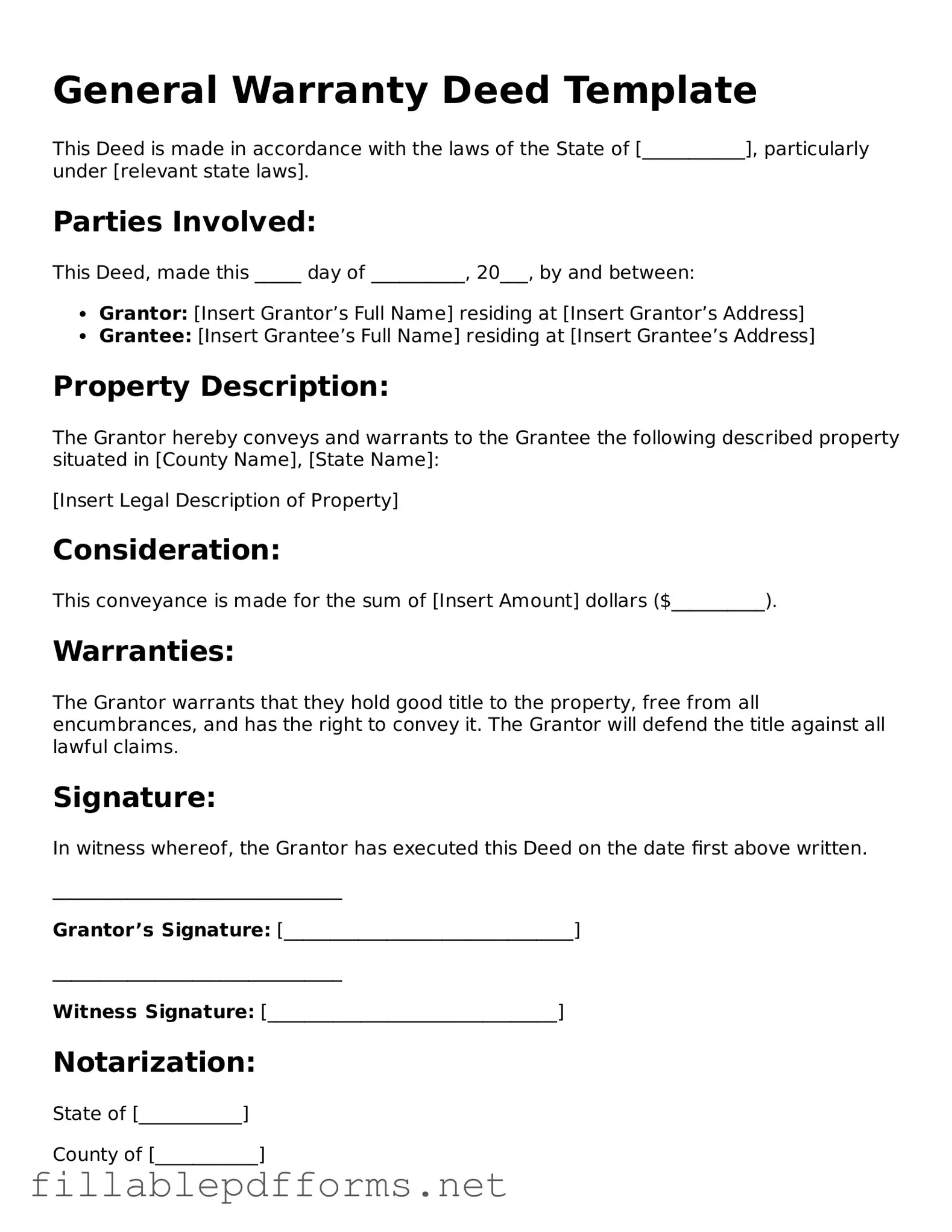The Deed form serves as a crucial document in the realm of property transactions, embodying the formal transfer of ownership rights from one party to another. This document encompasses essential details, including the names of the grantor and grantee, a clear description of the property, and the consideration involved in the transfer. It is vital for establishing legal ownership and ensuring that the transaction adheres to applicable laws and regulations. The Deed form may vary in type, with options such as warranty deeds and quitclaim deeds, each serving different purposes and offering varying levels of protection to the parties involved. Additionally, the execution of the Deed typically requires notarization and may necessitate the involvement of witnesses, further solidifying its validity. Understanding the components and implications of the Deed form is essential for anyone engaged in real estate transactions, as it not only facilitates the transfer of property but also safeguards the rights of both the seller and the buyer.
